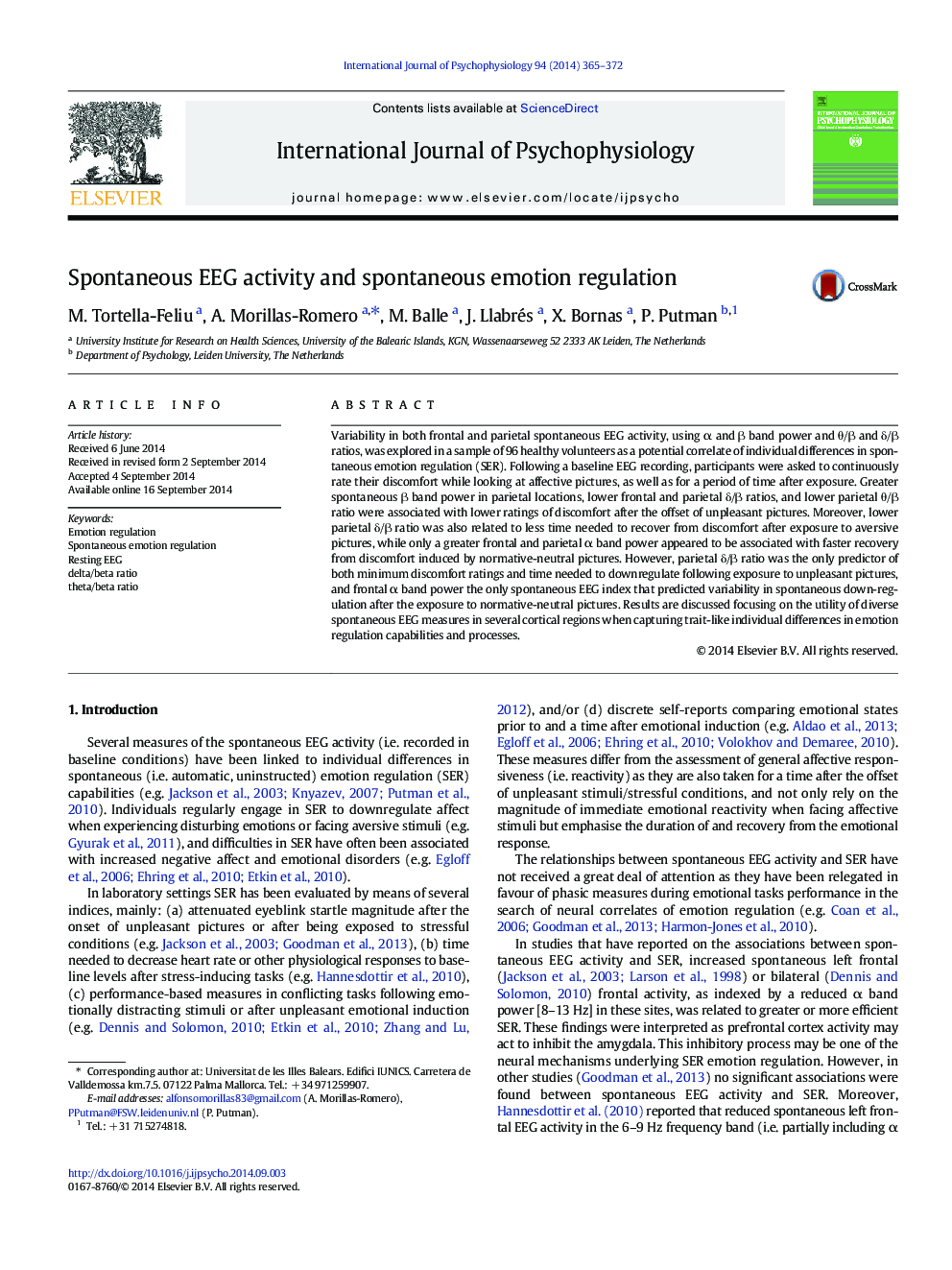| Article ID | Journal | Published Year | Pages | File Type |
|---|---|---|---|---|
| 930173 | International Journal of Psychophysiology | 2014 | 8 Pages |
•Relationships between spontaneous EEG and SER deserve to be further investigated.•Greater frontal alpha bilateral activity predicted faster SER.•Parietal delta/beta ratio appeared to be predictive of more efficient SER.•EEG measures beyond frontal alpha could be of interest when exploring SER.
Variability in both frontal and parietal spontaneous EEG activity, using α and β band power and θ/β and δ/β ratios, was explored in a sample of 96 healthy volunteers as a potential correlate of individual differences in spontaneous emotion regulation (SER). Following a baseline EEG recording, participants were asked to continuously rate their discomfort while looking at affective pictures, as well as for a period of time after exposure. Greater spontaneous β band power in parietal locations, lower frontal and parietal δ/β ratios, and lower parietal θ/β ratio were associated with lower ratings of discomfort after the offset of unpleasant pictures. Moreover, lower parietal δ/β ratio was also related to less time needed to recover from discomfort after exposure to aversive pictures, while only a greater frontal and parietal α band power appeared to be associated with faster recovery from discomfort induced by normative-neutral pictures. However, parietal δ/β ratio was the only predictor of both minimum discomfort ratings and time needed to downregulate following exposure to unpleasant pictures, and frontal α band power the only spontaneous EEG index that predicted variability in spontaneous down-regulation after the exposure to normative-neutral pictures. Results are discussed focusing on the utility of diverse spontaneous EEG measures in several cortical regions when capturing trait-like individual differences in emotion regulation capabilities and processes.
